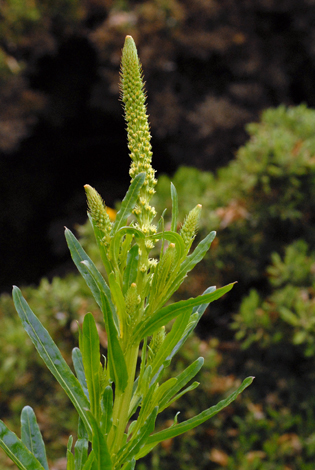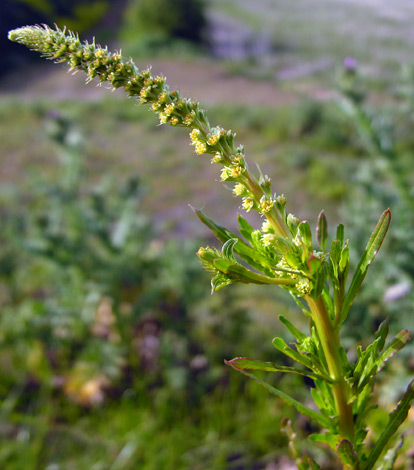Reseda luteola Weld CC DD N


The peculiar name Weld possibly (according to Geoffrey Grigson in The Englishman's Flora) arises from some of the old European names such as Gaude, Wau or the German Waud. Like Woad (Isatis tinctoria) which is now a rare plant introduced into Britain many years ago (therefore an Archeophyte), it was well known to European cultures such as the Romans. It was used for dyeing and regarded as one of the best plants for making a fast yellow dye. If used with Woad it produces Lincoln Green which Robin Hood is supposed to have worn. The British native supplies were not sufficient to supply the dyers' needs so it was introduced as well. Reseda luteola was even deliberately sown together with corn in the eighteenth century.
To make the dye, the leaves and stems are chopped up and simmered, not boiled, for 30 minutes. Perhaps depending on the habitat in which the original plant grew it doesn't always produce a brilliant yellow colour but even today people use these old methods of dyeing and you can find the history and recipes for dyeing with Weld on the Internet.
Reseda luteola will colonise waste ground very easily and is now common throughout England, southern Scotland and the area around Inverness. It is also plentiful in Ireland and Wales.
LHS: Balintore Nr Inverness, Scotland 16th May 2007 RHS: Frodsham marshes Cheshire 19th May 2005
Added on 19th May 2005, updated 16th November 2011




